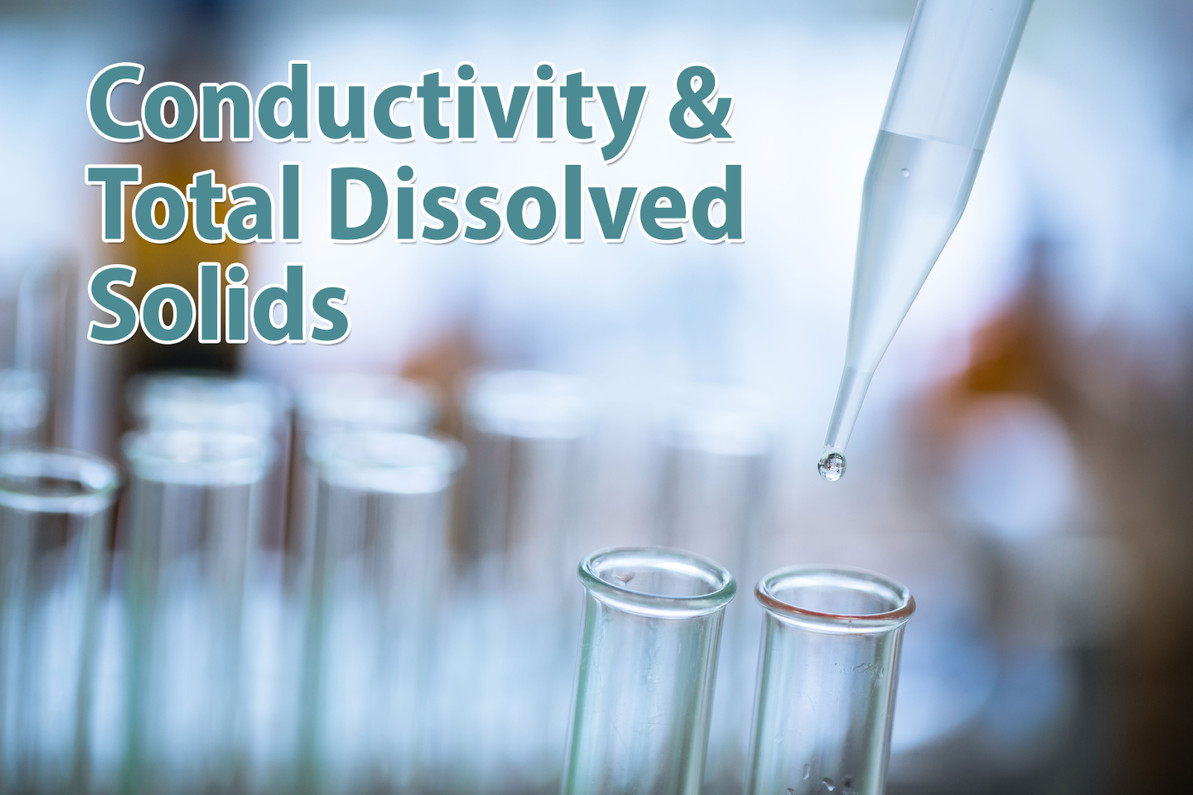Conductivity and Total Dissolved Solids
Conductivity of electricity (EC) in a liquid and water shows differences dependent on the chemicals and substances found in the solution, where solids, salts, and contaminants, increase the EC value, while pure and drinking water has a lower EC value.
The EC value is measured in microSiemens (µS/cm) and readings generally fall between 30 µS/cm to 2000 µS/cm, for water of high quality while ocean water and brine will have a reading of approximately 40,000 µS/cm and greater. Higher values also signal pollution and contamination and are used routinely in the field to test for water potability.
Substances that are dissolved in liquids (called Total Dissolved Solids, TDS) can be salts, minerals inorganic metals and compounds present that signals impure water, and is measured in parts per million (PPM) and in milligrams/liter. Good quality water has values between 0 and 600 ppm and values over 1200 ppm are considered an unsatisfactory level of TDS. By measuring the microSiemens (µS/cm) of a water sample its an easy conversion of EC to the TDS value, and the two values are readily interconverted.
At CP Lab Chemicals we provide the solvents, reagents, and Chemical Standards of Conductivity for accurate, reliable and reproducible generation of the EC values by conductimetric measurements using portable or laboratory instruments and for the determination of Total Dissolved Solids.
Conductivity standards are made from various salts or other ionizable chemicals, the most commonly used being sodium chloride and potassium chloride.
Practical Uses of Conductivity Measurements
Hard water measurement and mediation of hard water in industrial processes (scale buildup), including laundries, swimming pools and cooling and circulation systems. Hydroponics, aquaculture and agriculture all measure conductivity and EC values as plants and animals respond to TDS concentrations differently, and higher economic return and productivity in agriculture are achieved by changing pH and TDS levels in each growing habitat.
Conductivity Standards and Products Catalog Quick List
Analytical Products and Chemicals Catalog Quick List
Conductivity Methods:
- EPA Methods for Conductivity Measurement Method 120.1: Conductance (Specific Conductance, µmhos 25°C) by Conductivity Meter
- EPA METHOD 9050A SPECIFIC CONDUCTANCE
Recent Posts
-
Safety First: Choosing the Right PPE for Your Laboratory
Are you aware that over 20,000 workplace injuries occur annually i …1st Oct 2025 -
The Future of Lab Supplies: Trends You Can't Ignore
As laboratories across various industries evolve, the demand for i …29th Sep 2025 -
Ergonomics in the Lab: Choosing Equipment for Comfort
In the fast-paced world of laboratory work, comfort should not be …15th Sep 2025

